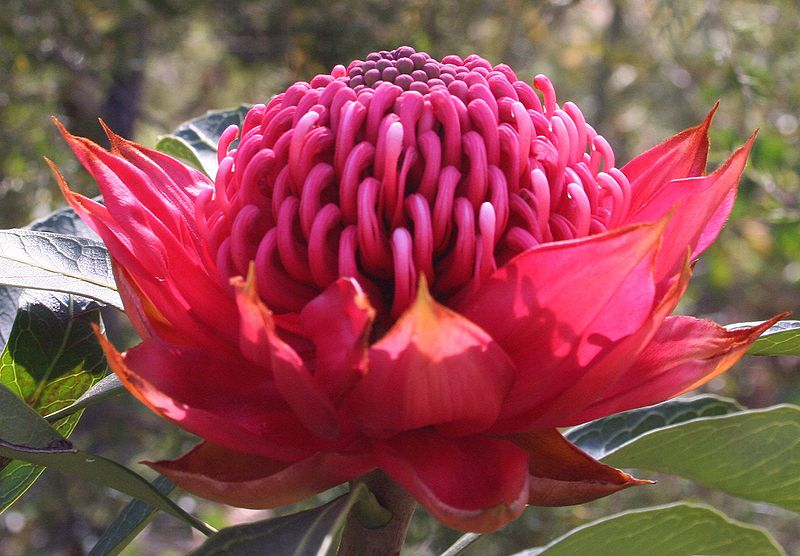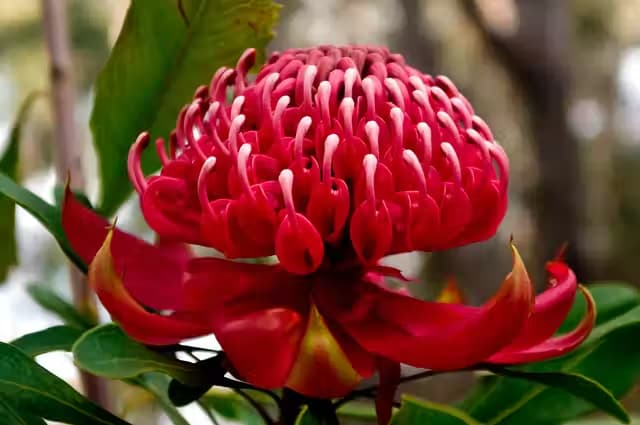Waratah
Waratah (Telopea) is an Australian-endemic genus of five species of large shrubs or small trees, native to the southeastern parts of Australia (New South Wales, Victoria, and Tasmania). The most well-known member of this genus is Telopea speciosissima, which is the state flower of New South Wales and features vivid red blossoms. The Waratah is a flowering plant found in the Southern Hemisphere that belongs to the Proteaceae family. Being a pyrogenic flowering species, they favor sandy loam soils and depend on post-fire flowering, followed by the formation and dissemination of latent seeds, to benefit from favorable growing circumstances in the altered environment that results from a fire.
The inflorescence, which is frequently very large, vividly colored, and showy and is composed of several tiny flowers densely packed into a compact head or spike, is the primary distinguishing feature of Proteaceae. Waratah species have inflorescences with a basal ring of colored bracts that are between 6 and 15 cm in diameter. The leaves are 10–20 cm long, 2-3 cm wide, and have whole or serrated margins. They are grouped spirally. The Eora Aboriginal people, who lived in the Sydney region before the arrival of the Europeans, gave the waratah its name.












